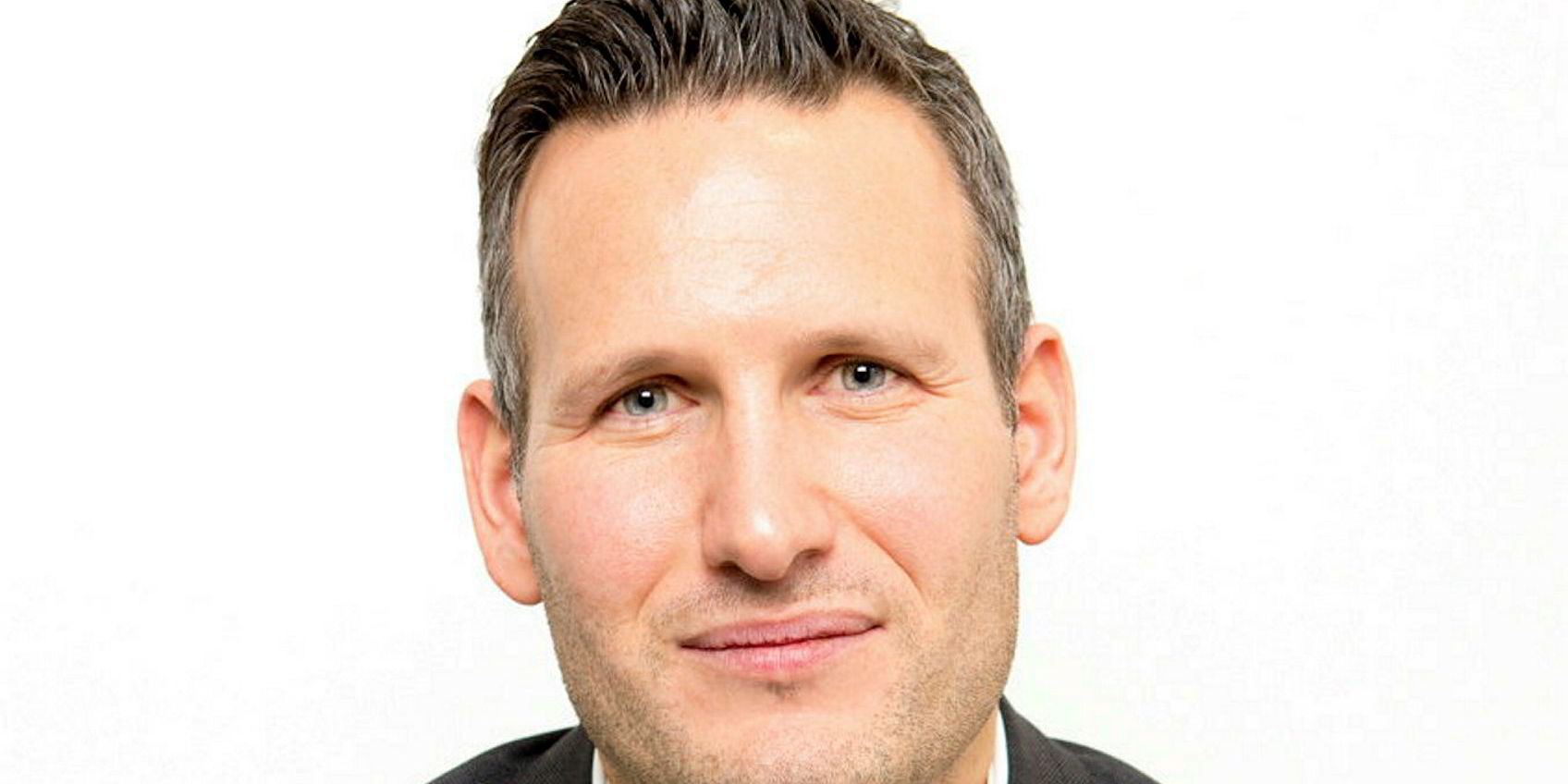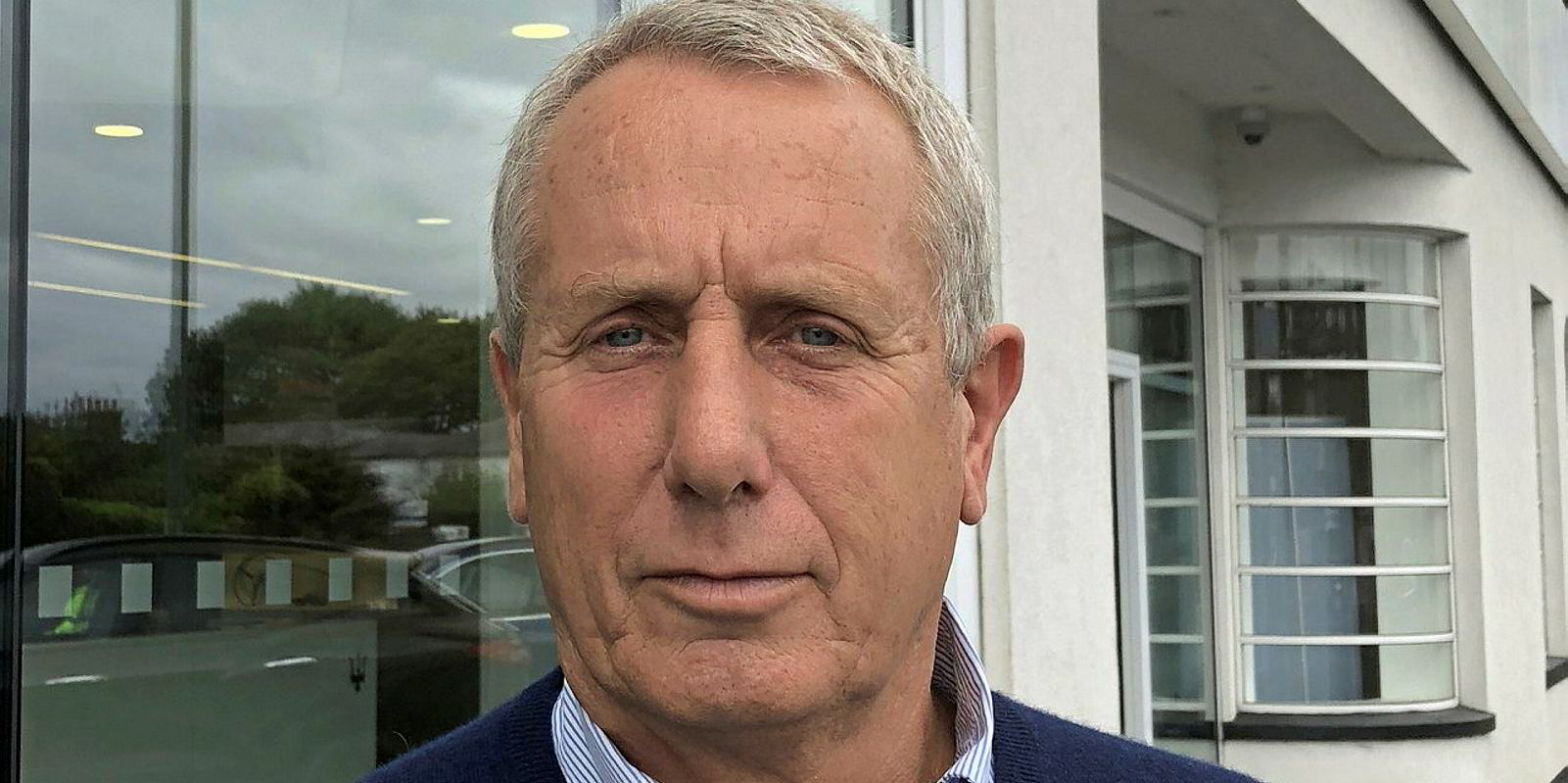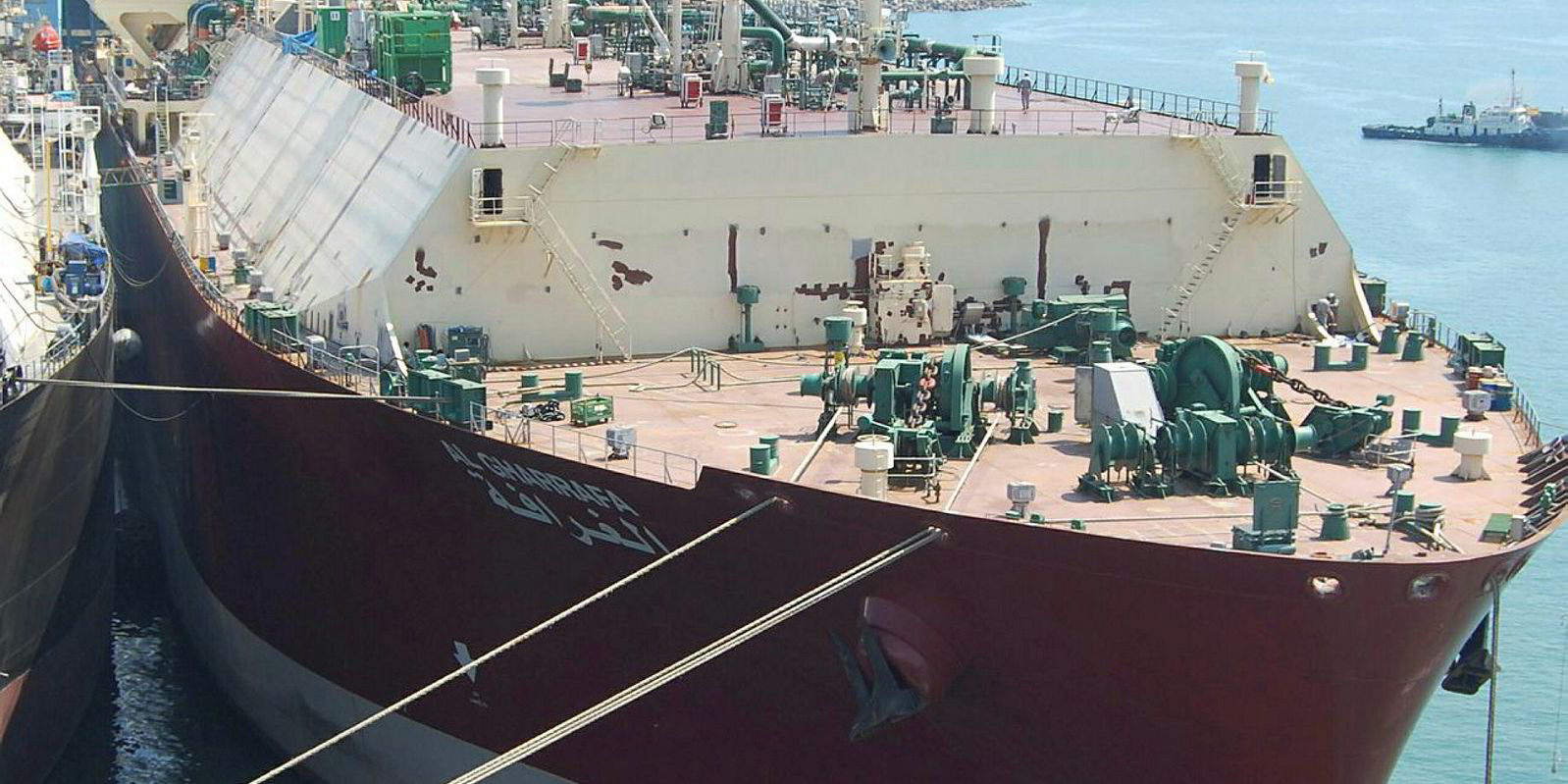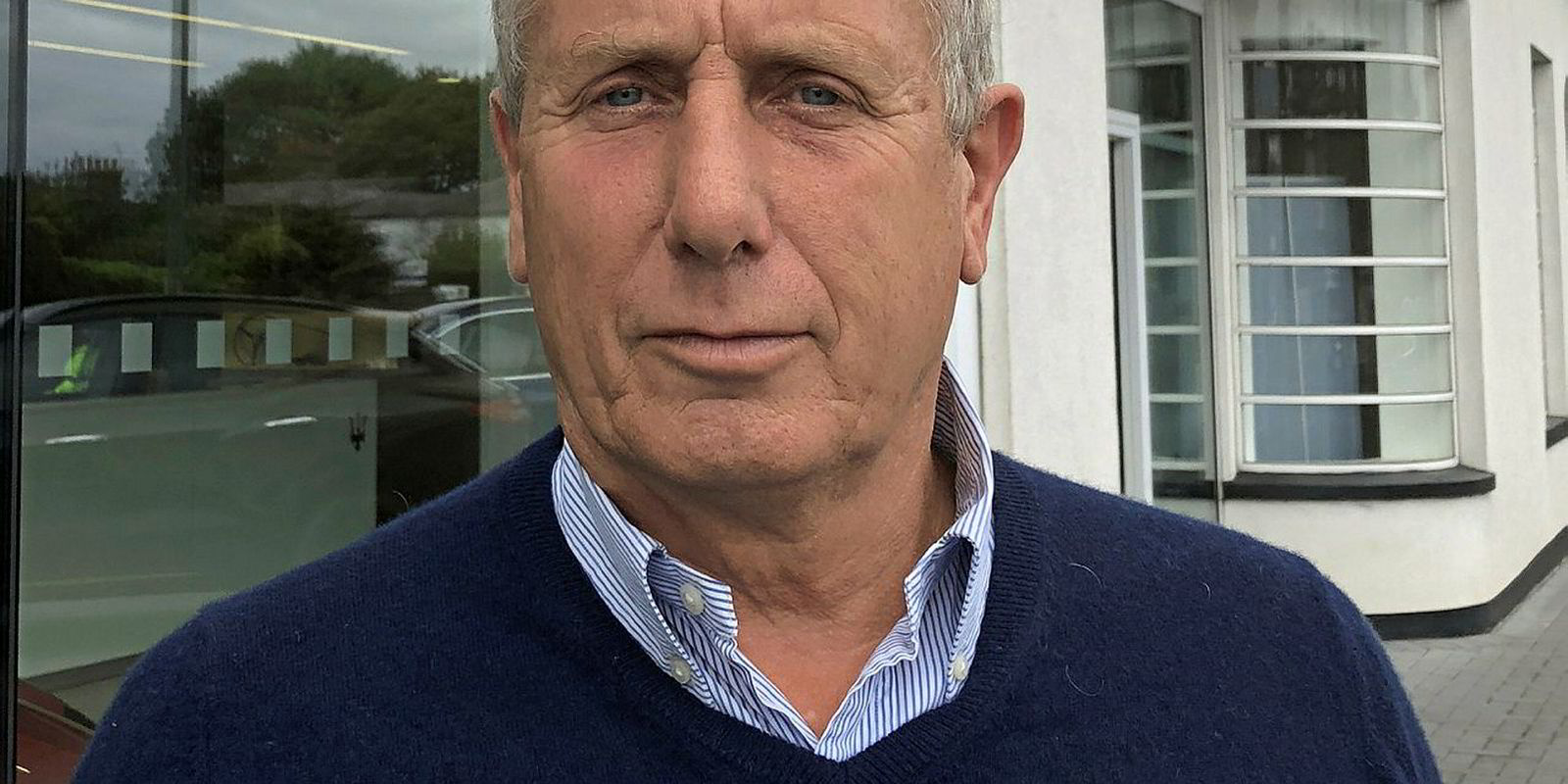The IMO sulphur cap that enters force on 1 January is giving the LNG shipping sector another reason for optimism. After all, regulators are demanding cleaner fuel, and LNG helps fit that bill.
And while most shipowners will choose other fuelling options, LNG shipping experts like MOL's Takeshi Hashimoto say it will look more competitive once shipowners come to grips with the higher cost of low-sulphur fuel.
In LPG, Dorian chief executive John Hadjipateras sees that cargo as an eventual fuel as well, though he says the industry is not there yet.
Keith Bainbridge
Managing director, CS LNG
In principle, the [IMO] deadline should have little impact on most LNG vessels as they can effectively run on boil-off gas for the majority of the time while using MGO [marine gasoil] as pilot fuel or ULSFO [ultra-low sulphur fuel oil] if it is available.
The exception is the Q-Flex and Q-Max ships, which were designed without the capability of burning boil-off gas and currently burn HFO. These 42 vessels, one has been converted to burn gas, will need modification in order to comply.
The issue for Q-ships and the owners who operate them is who will pay for modification or compliant fuel.
We understand that the owners are having trouble convincing charterers that it is their responsibility to provide compliant fuel.
In 2019, most of the owners that have been enjoying the recent bumper rates should brace themselves for a return to the lower margin business.
The uncertainty of the Chinese demand coupled with a warmer winter means that demand is down. The new volumes of LNG coming stream from the US and Australia mean the price of LNG will continue to slide and thus the arbitrage falls, which reduces the value for the transportation element.
About 16 new ships will be delivered in the next six months and we expect several ships being brought out of lay-up, which together will increase ship availability and hence competition.

Joni Mackay
LNG broker and partner, Affinity Shipping
LNG is likely to be the last viable fossil fuel used in significant shipping sectors. Its environmental credentials cannot be beaten until major technological improvements are made.
While scrubbers economically make sense, we are already seeing the onset of negativity around the different lobbyists who seek to devalue the use of them on unproven theories, which may reflect the reluctance of owners to make the investment.
Demand for LNG from IMO 2020 could be significant for suppliers, having a positive net effect on the industry. The major stumbling block is the unfamiliarity with the fuel itself. It is a different commodity bringing differing logistical challenges, risks and importantly pricing mechanisms.
The key for the LNG industry to reach its potential as a viable bunker supplier will be gaining transparency on pricing and to develop new methods in hedging against other fuels. However, it is challenging to gain sufficient growth in such a traditionally opaque industry.
2019 is starting on a high for LNG shipping. Some 48 million tonnes per annum of new liquefaction capacity could be added within 2019, the majority — about 30 million tonnes — coming from the US.
This coupled with strong Asian demand is expected to drive average voyage distances higher, tightening the shipping balance.
Fifty three ships are expected to be delivered in 2019. However, only four are uncommitted, leaving minimal effect to the overall shipping market.
Delays in project start-ups and whether Yamal volumes get dropped into Europe or go to Asia could be significant swing factors.

Takeshi Hashimoto
Senior managing executive officer, MOL
I believe the competitiveness of LNG as a fuel against oil will be enhanced. We expect low-sulphur fuel oil will be, at least for one or two years, quite expensive compared with heavy fuel oil [HFO], roughly $200 or $300 per tonne higher. Since the LNG price level will not be very different from [the] HFO price, LNG can be a serious choice for shipowners.
Investments for LNG bunkering facilities including storage, barge or other necessary commercial logistics systems are still relatively poor. It will be a bottleneck to accelerate the trend to shift to LNG bunkering.
LNG demand in China, India and other Asian emerging markets will be a key driver. If their demand continues to increase, we expect a relatively strong shipping market will be sustainable.
Since Asian LNG markets including China and India are very price sensitive, it is not so easy to expect the total volume of demand to increase.
Trade issues between US and China are our big concern. If the issue is sorted out, China will become a huge LNG buyer from US and accelerate the pace of new project development there. But if not, it will be a good news for other projects in Canada, Russia, Qatar and Mozambique.
The worst-case scenario is an escalation of the trade war, which would damage the global economy and create strong downside pressure to the energy and shipping markets.

Oystein Kalleklev
Chief executive, Flex LNG
Cleaner fuel is a boon for the LNG industry. LNG is virtually sulphur free, it emits hardly any particulate matter, reduces NOx by more than 80% and CO2 by 20% to 25%.
LNG is a maritime fuel for the future. So, if you are building a ship today, you should definitely consider fuelling it with LNG as costs for dual-fuel engines are also coming down rapidly, supporting the shift to LNG as maritime fuel.
All LNG ships except the Q-Flex and Q-Max are designed for running on LNG boil-off gas. So we just have to make sure we have low-sulphur fuel onboard for the pilot and in case we heel out [discharge the full LNG cargo, leaving none for fuel].
Not a big challenge, rather an opportunity. The outlook is bright: in 2019 and 2020 production of LNG will grow by about 65 million tonnes per annum (mtpa). There are about 70 vessels due for delivery in same period.
This gives a factor of about 1.1 vessels, while approximately 45 mtpa of LNG coming onstream from the US probably requires 1.7 vessels per mtpa due to sailing distance. Needless to say the market will be tight.

John Hadjipateras
Chief executive, Dorian LPG
The IMO, by not giving guidance as to how targets need to be achieved, has given owners a chance to differentiate themselves, as different owners follow different paths and different customers have different views, preferences, or requirements on what types of solutions [to the sulphur cap] they want.
We see this as a huge opportunity for Dorian and it provides us with the flexibility to adapt to the results of future environmental studies and regulations. These decisions were made consistent with our core values as well as our commitment to reducing our environmental footprint.
We have been operating two of our VLGCs with exhaust-cleaning systems since 2015 without any meaningful operational difficulties or significant extra expense. We have also spent a lot of time and effort in developing the LPG fuel solution, and already invested in some upgrade and preparation for retrofitting part of our fleet, during the construction phase in 2013 to 2015.
While we have not yet committed to the retrofit of vessels to run on LPG, we do strongly believe this is a good long-term solution even if the economics are not quite there at the moment.





